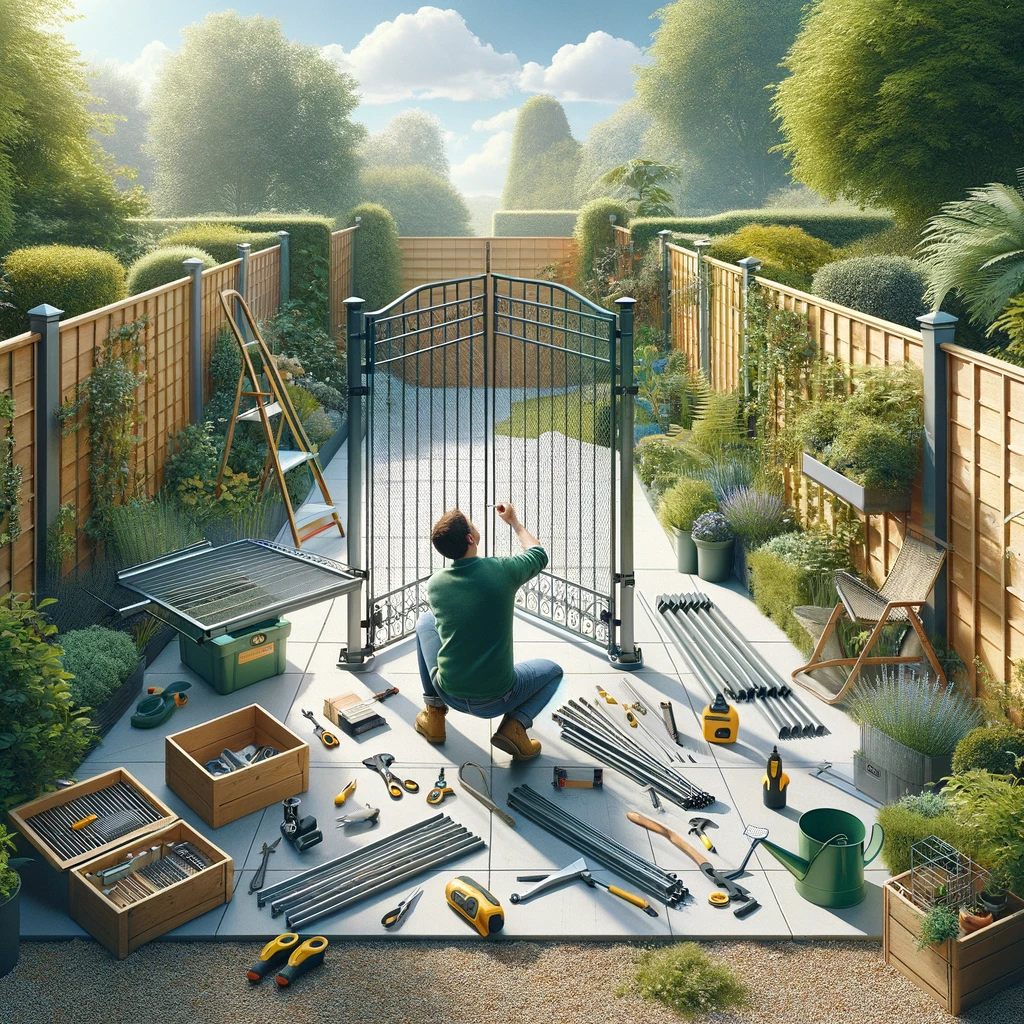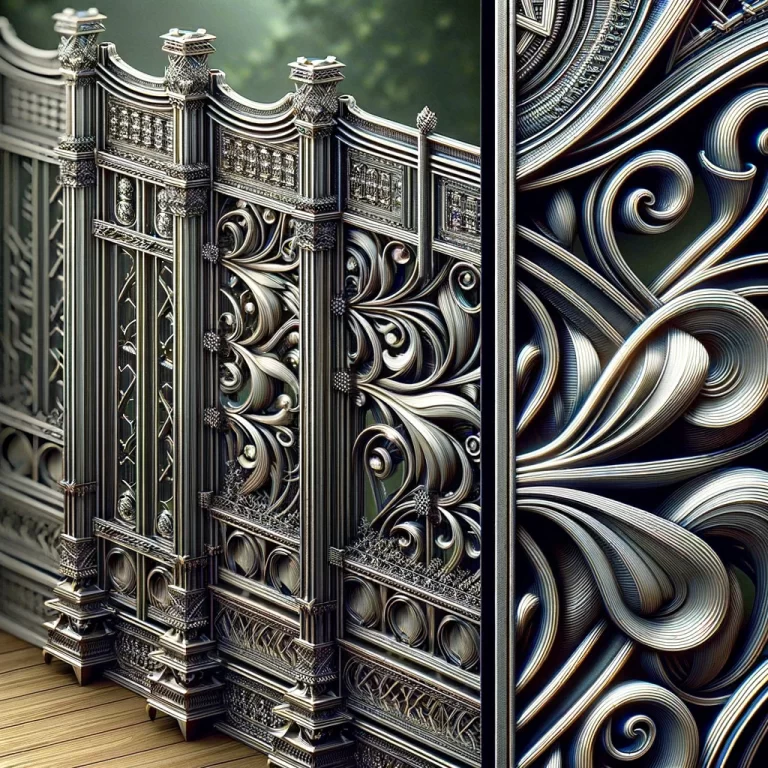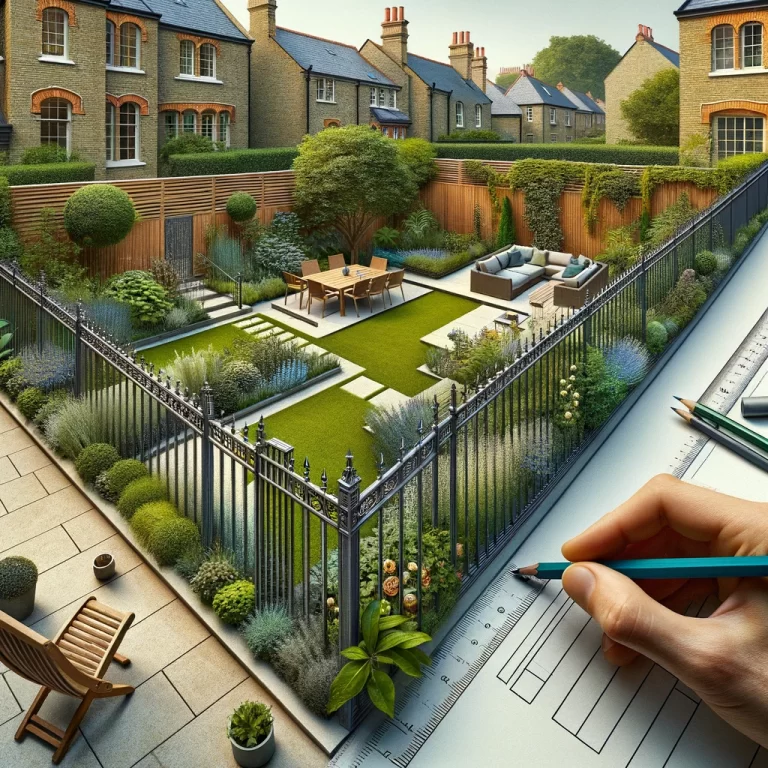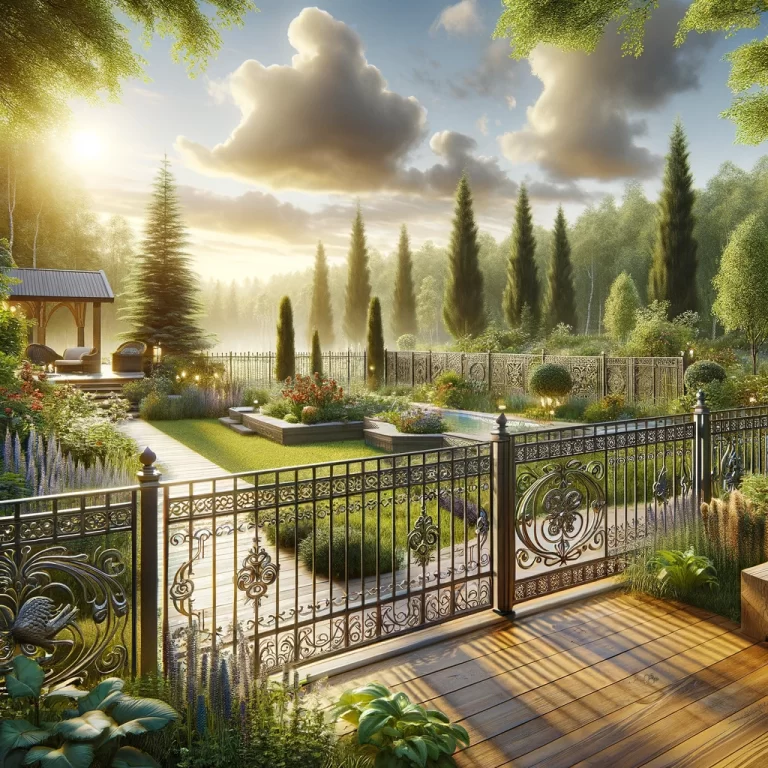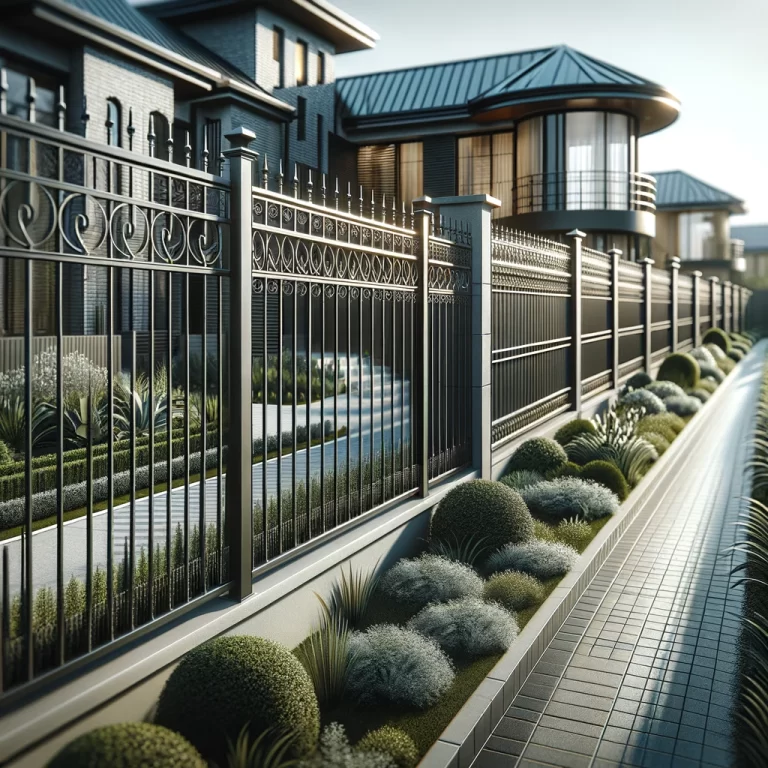Fences serve many purposes, from providing security and privacy to enhancing the aesthetic appeal of a property. In this article, we will explore the different types of fences available, including wood, vinyl, aluminium, chain link, and wrought iron. We will also discuss the factors that affect the lifespan of a fence, such as material and installation quality, climate conditions, and maintenance. We will reveal which type of fence lasts the longest and provide tips on how to increase the lifespan of your fence. Let’s dive in!
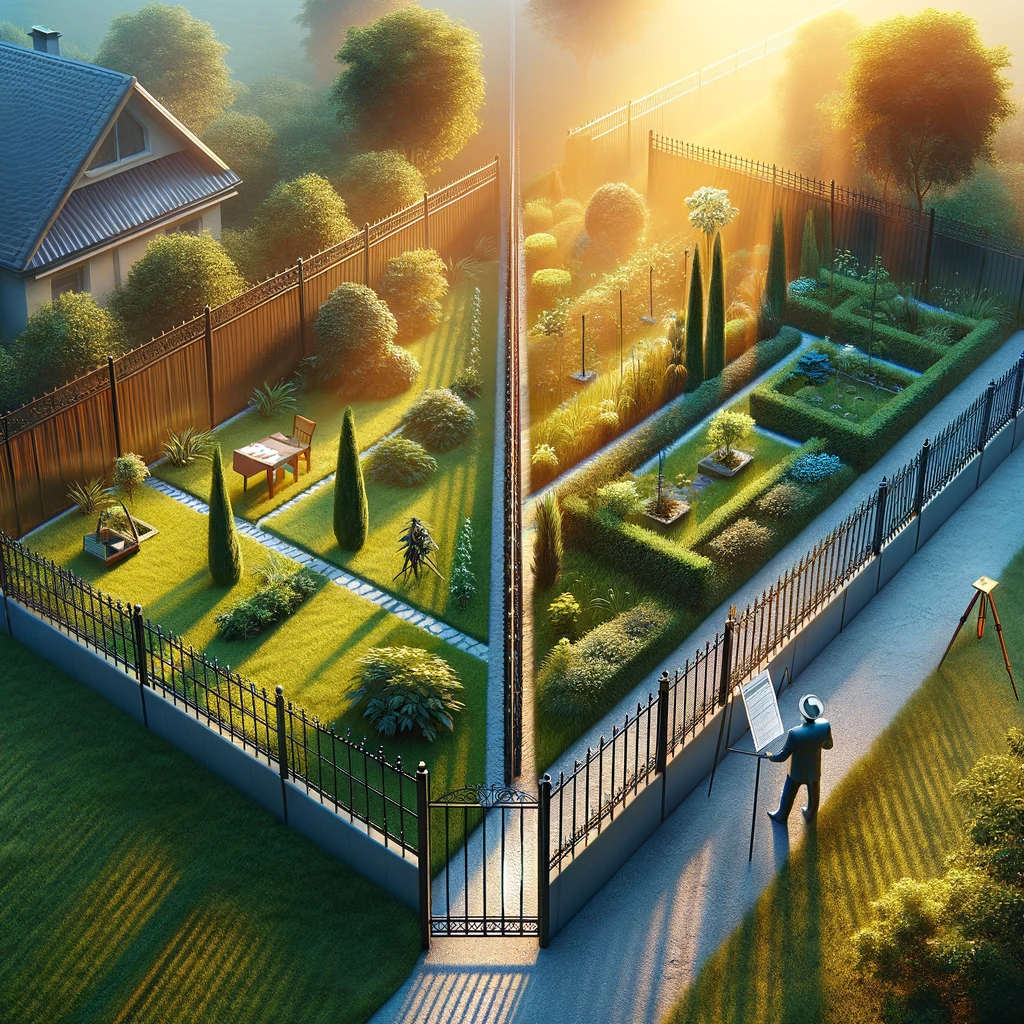
What Is the Purpose of a Fence?
The purpose of a fence is to provide security, privacy, and boundary demarcation for residential, commercial, or industrial properties.
Fences play a crucial role in enhancing the overall security of a property, acting as a physical barrier to deter unauthorized entry and potential intruders. They also help create a sense of privacy, shielding occupants from prying eyes and creating a secluded space. In addition, fences serve to clearly define property boundaries, preventing disputes and ensuring a clear delineation of property ownership.
Fences can add aesthetic value, enhancing the visual appeal of a property with various designs and materials such as wooden picket fences, ornamental iron fences, or modern vinyl fences. Each type of fence not only serves distinct functional purposes but also contributes to the overall aesthetics of the property, complementing its architectural style.
What Are the Different Types of Fences?
Different types of fences include wood, vinyl, iron, and chain link, each offering unique characteristics and suitability for various needs.
Wood fences are known for their natural aesthetic appeal, blending well with outdoor environments. They provide privacy and security while being relatively easy to install. Wood requires regular maintenance to prevent rot and decay.
Vinyl fences, on the other hand, are low maintenance and highly durable, resisting rot, fading, and warping. They come in various colours and styles, offering a modern look that lasts for years.
Iron fences are durable and classic, ideal for enhancing security and adding a touch of elegance to properties. While they require minimal maintenance, they can be prone to rust if not properly cared for.
Chain link fences are cost-effective and provide visibility, making them suitable for boundary demarcation. They offer limited privacy and may not be the most aesthetically pleasing option.
Wood Fences
Wood fences, such as those made from cedar, pine, or spruce, offer a natural and traditional aesthetic, enhancing the charm of any property.
Each type of wood brings its own unique qualities to the table. Cedar is known for its natural resistance to rot and insects, making it highly durable without the need for chemical treatments. Pine is a versatile option that can be easily stained or painted to match different styles and preferences. On the other hand, spruce offers a more economical choice while still providing a classic look. Regardless of the wood type chosen, wood fences require regular maintenance such as staining or sealing to preserve their appearance and longevity.
Vinyl Fences
Vinyl fences, commonly made from PVC, are known for their low maintenance, durability, and versatility in design options.
One of the standout features of vinyl fences is their exceptional durability. PVC material is resistant to rot, rust, and insect damage, making it a long-lasting fencing option. This durability translates to cost-effectiveness in the long run, as vinyl fences require minimal repairs and replacements over time.
The ease of maintenance associated with vinyl fences further adds to their appeal. Unlike wood fences that require staining or painting, PVC fences can be simply cleaned with soap and water, maintaining their pristine appearance without much effort.
Aluminium Fences
Aluminium fences are popular for their lightweight construction, corrosion resistance, and modern aesthetic appeal.
One of the key advantages of aluminium fences is their remarkable durability, as they are not prone to rust or rot, unlike traditional iron or wood fences. This makes them suitable for withstanding various weather conditions, from intense sunlight to heavy rain.
Aluminium fences offer a wide range of contemporary design choices, allowing homeowners to customise their outdoor spaces with sleek and stylish options that enhance the overall look of the property.
Chain Link Fences
Chain link fences, often made from galvanized steel, are known for their affordability, low maintenance, and transparent design.
One of the key advantages of chain link fences is their cost-effectiveness compared to other fencing options. The materials used in these fences are durable and resistant to corrosion, ensuring longevity without the need for frequent upkeep. Due to their minimal maintenance requirements, chain link fences are a popular choice for both residential and commercial properties.
The see-through structure of chain link fences provides security while maintaining visibility. This feature is useful for security purposes, as it allows property owners to monitor activities outside the fence easily. The transparency of chain link fences makes them a popular choice for areas where visibility is essential, such as sports fields or playgrounds.
Wrought Iron Fences
Wrought iron fences exude elegance and durability, making them ideal for enhancing security and aesthetics simultaneously.
One of the standout features of wrought iron fences is their exceptional strength, providing a high level of security to any property.
These fences are known for their intricate ornamental designs, adding a touch of sophistication and charm to any landscape.
The longevity of wrought iron fences is remarkable, as they can withstand harsh weather conditions and retain their beauty over time.
What Factors Affect the Lifespan of a Fence?
Several factors influence the lifespan of a fence, including material quality, installation precision, weather conditions, and maintenance practices.
When you opt for a high-quality fencing material like cedar or vinyl, you are setting a strong foundation for durability. These materials are resistant to rot, decay, and insect damage, thus increasing the fence’s longevity. Precision during installation is crucial; a properly installed fence is less prone to leaning or shifting, boosting its structural integrity.
The climate in which you reside plays a vital role in your fence’s lifespan. Harsh weather conditions such as excessive rain, snow, or intense heat can accelerate wear and tear. To combat these effects, consider applying weather-resistant treatments or sealants to enhance protection.
Material Quality
The quality of fencing materials, such as galvanised steel, aluminium, PVC, wrought iron, or wood, plays a crucial role in determining the fence’s durability and lifespan.
Galvanised steel is renowned for its strength and corrosion resistance, making it ideal for areas prone to harsh weather conditions. Aluminium, on the other hand, is lightweight and low-maintenance, perfect for a modern aesthetic.
PVC fences require minimal upkeep and are versatile in design, suitable for both residential and commercial properties. Wrought iron offers timeless elegance but needs regular maintenance to prevent rust.
Wood fences exude natural charm but may require staining or sealing to prevent rotting. Each material brings its unique features and maintenance considerations to enhance the longevity and appeal of your fence.
Installation Quality
The precision and quality of fence installation are critical factors that can significantly extend the lifespan of the fencing structure.
Proper installation techniques are not purely about aesthetics; they play a pivotal role in the overall performance and durability of a fence. When fences are installed correctly, they are better equipped to withstand environmental stressors such as wind, rain, and temperature fluctuations. Inadequately installed fences are more prone to leaning, warping, or collapsing, leading to costly repairs or replacements. Quality installation ensures that the fence stands securely, enhances its structural integrity, and minimises the risk of premature deterioration.
Climate and Weather Conditions
Climate and weather conditions, such as extreme temperatures or high humidity levels, can have a significant impact on the lifespan of a fence.
Moisture from high humidity levels can lead to rot and mould in wooden fences, causing deterioration and weakening of the structure over time. In contrast, prolonged exposure to intense sunlight can cause fading and drying out of wooden fences, making them prone to cracking and splintering. Similarly, extreme temperature fluctuations can result in expansion and contraction of materials, leading to warping or bending of fences.
For metal fences, constant exposure to moisture can accelerate rusting, compromising the structural integrity of the fence. UV rays from sunlight exposure can cause paint on metal fences to fade and peel, reducing their aesthetic appeal and protective coating. Frequent temperature changes can cause metal fences to expand and contract, potentially loosening joints and fastenings.
Maintenance and Upkeep
Regular maintenance practises, including cleaning, debris removal, and inspections, are essential for preserving the durability and extending the lifespan of a fence.
Regarding cleaning your fence, using a gentle cleanser and a soft brush can help remove dirt and grime without damaging the surface. Regularly removing debris such as leaves, branches, and dirt can prevent moisture build-up and potential rot.
Inspections should be conducted on a quarterly basis to check for loose boards, rusty nails, or any signs of damage that need immediate attention.
- When identifying issues, repairs should be made promptly to prevent further deterioration.
- Setting up a maintenance schedule and adhering to it can significantly reduce the need for major repairs or premature replacement.
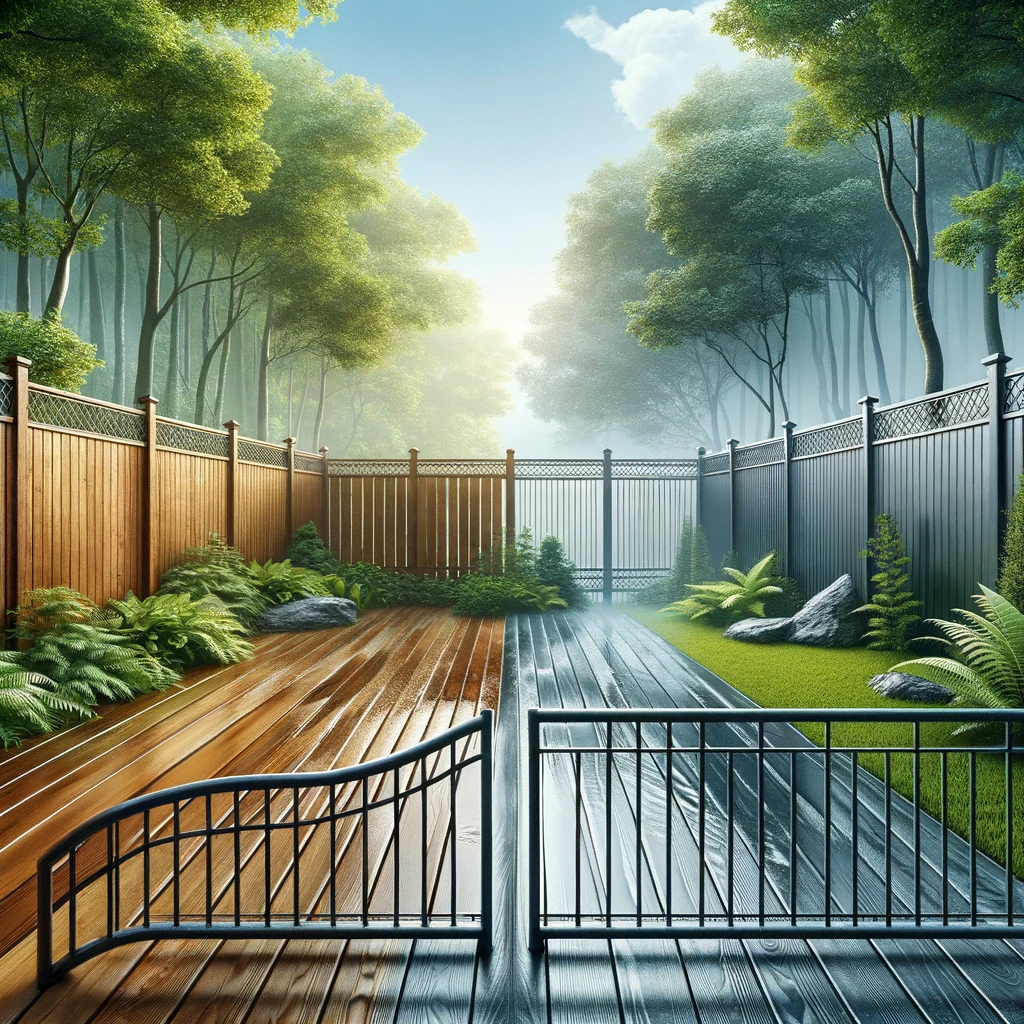
Which Type of Fence Lasts the Longest?
Among the various types of fences, vinyl fences are known to have the longest lifespan due to their durability, low maintenance requirements, and resistance to weathering.
On the other hand, aluminium fences are also highly durable and require little maintenance, making them a popular choice for residential properties. Their powder-coated finish provides excellent rust resistance, enhancing their longevity in various weather conditions. While not as long-lasting as vinyl, aluminium fences still offer a good balance of durability and aesthetics.
Similarly, wrought iron fences are renowned for their classic and elegant look, adding a touch of sophistication to any property. They require more maintenance than vinyl or aluminium fences to prevent rust and corrosion. With proper care, wrought iron fences can last for decades, making them a durable option for those seeking a timeless appeal.
For those prioritising affordability and visibility, chain link fences are a popular choice. While they may not match the longevity of vinyl or aluminium, chain link fences are durable and require minimal upkeep. Their open design allows for excellent air circulation, reducing the risk of wind damage and enhancing their overall durability.
For a more traditional aesthetic, wood fences remain a popular option, offering a warm and natural look to properties. Wood fences require regular maintenance, such as staining or painting, to prolong their lifespan and protect them from weather damage. Despite this maintenance requirement, wood fences can still last for many years if properly cared for, making them a timeless and versatile choice for homeowners seeking a classic fence design.
Vinyl Fences
Plastic fences stand out as the longest-lasting fencing option, offering exceptional durability and minimal maintenance requirements for extended lifespan.
Plastic fences are known for their impressive longevity due to their resistance to various elements. They are highly resilient against weather conditions, such as rain, sun exposure, and extreme temperatures, which can cause damage to other types of fencing materials.
The inherent properties of plastic make it highly resistant to rot, decay, and insect infestation, ensuring that your fence remains structurally sound for years to come. This durability means that plastic fences do not require frequent repairs and replacements, saving you time and money in the long run.
Aluminium Fences
Aluminium fences are renowned for their extended lifespan, owing to their corrosion resistance, lightweight construction, and adaptability to various environmental conditions.
One of the key factors contributing to the impressive longevity of aluminium fences is their remarkable rust-proof properties, which help them withstand moisture and harsh weather conditions. Unlike iron or steel fences, aluminium does not corrode, ensuring that the fence remains sturdy and attractive for years. The lightweight nature of aluminium makes it easier to install and maintain, reducing the chances of structural damage over time.
The versatility of aluminium fencing also plays a significant role in prolonging its lifespan. Aluminium can be easily customised to fit different design preferences and landscaping needs. Whether you prefer a traditional picket fence or a more modern style, aluminium can be moulded and shaped to achieve the desired aesthetic while maintaining its durability.
Wrought Iron Fences
Wrought iron fences boast exceptional durability and longevity, making them a top choice for both security and aesthetic appeal.
One of the key defining features of wrought iron fences is their remarkable strength, capable of withstanding harsh weather conditions and potential intruders alike. This robust construction not only provides a high level of security but also contributes to the lasting beauty of these fences over time.
The ornamental designs found in wrought iron fencing add a touch of elegance and sophistication to any property. Whether incorporating intricate scrollwork or classic geometric patterns, these fences serve as both a functional barrier and a charming decorative element.
Plus their aesthetic appeal and strength, wrought iron fences are incredibly resistant to rust and corrosion, ensuring that they maintain their striking appearance with minimal maintenance. This resilience to external elements is a testament to the superior quality of wrought iron as a fencing material.
Chain Link Fences
Chain link fences offer a dependable lifespan due to their sturdy construction, ease of maintenance, and suitability for various applications.
One of the key factors contributing to the longevity of chain link fences is their cost-effectiveness. The initial installation cost is relatively low compared to other fencing options, making them an affordable choice for both residential and commercial properties. Their durable materials such as galvanized steel or aluminum make them resistant to rust and corrosion, ensuring a long-lasting barrier that requires minimal upkeep.
Versatility is another standout feature of chain link fences. They can be customised to fit different heights, colors, and gauges to suit the specific needs of any property. Whether used for security, pet containment, or boundary delineation, chain link fences can adapt to various settings without compromising their structural integrity.
The combination of affordability, durability, and adaptability makes chain link fences a popular fencing choice for many homeowners and businesses seeking a reliable and long-lasting solution.
Wood Fences
Wood fences, whilst offering a classic and natural appearance, may require more maintenance to ensure an extended lifespan compared to other fencing materials.
- One crucial aspect to consider for enhancing the longevity of wood fences is regular maintenance. This includes inspecting for any signs of damage, such as rot or insect infestation, and promptly addressing these issues to prevent further deterioration.
- Applying a protective sealant to the wood surface can help shield it from moisture, UV rays, and other environmental factors that contribute to its degradation.
Weather protection plays a significant role in preserving the integrity of wood fencing. Installing the fence in a way that minimizes ground contact and allows for proper drainage can help prevent moisture buildup, which is a common cause of wood decay.
- Treating the wood with water-repellent finishes or stains can provide an extra layer of defense against the elements, extending the fence’s lifespan in the long run.
How Can You Increase the Lifespan of Your Fence?
To enhance the longevity of your fence, consider choosing high-quality materials, proper installation, regular maintenance, climate considerations, and safeguarding against pests or physical damage.
- When selecting materials for your fence, opt for durable options like cedar or vinyl, as they are known for their longevity and resistance to weathering.
- During installation, ensure that the fence posts are securely anchored into the ground to withstand external pressures such as wind or ground movement.
- Regular maintenance tasks like staining or sealing the wood, inspecting for rot or insect damage, and clearing debris can significantly extend the life of your fence.
- Take into account your local climate when choosing a fence design and materials to ensure they can withstand the seasonal changes and weather patterns.
- To protect against pests like termites or rot, consider using pest-resistant materials or applying protective coatings.
Choose High-Quality Materials
Selecting high-quality fencing materials is essential for prolonging the lifespan of your fence and ensuring its structural integrity over time.
High-quality fencing materials such as premium wood, aluminium, or vinyl offer superior durability compared to low-quality alternatives. These materials are resistant to rot, corrosion, and warping, ensuring your fence stands strong against the elements for years to come. In addition, the use of high-quality materials significantly reduces maintenance needs, saving you time and effort in the long run.
A well-built fence with premium materials not only enhances the aesthetics of your property but also increases its overall value. Investing in top-grade fencing materials ultimately leads to a longer-lasting and more sturdy fence that enhances both the functionality and visual appeal of your outdoor space.
Properly Install the Fence
Precise and professional installation is crucial for maximising the lifespan of your fence and preventing structural issues in the future.
Regarding ensuring the longevity and durability of your fence, the significance of getting the installation right cannot be overstated. A properly installed fence not only enhances the aesthetic appeal of your property but also serves as a robust barrier, providing security and privacy.
Installation precision directly impacts the structural stability of the fence, safeguarding it against harsh weather conditions, ground movement, and everyday wear and tear.
By following correct installation techniques meticulously, you can avoid common problems such as leaning posts, sagging panels, or gaps in the fencing, which can compromise the overall performance of the structure. Attention to detail during installation ensures that each element is securely in place, contributing to a fence that stands the test of time with minimal maintenance requirements.
Regularly Maintain and Repair the Fence
Consistent maintenance and timely repairs are essential for preserving the integrity and extending the lifespan of the fence.
Regular cleaning is key to preventing dirt build-up and potential damage to the fence material. This can be done using a mild detergent and water, along with a soft brush or sponge to gently scrub away grime.
Having a set inspection schedule, perhaps quarterly or biannually, allows you to identify any issues early on. Look out for loose boards, rust spots, leaning posts, or signs of insect infestation.
Regarding repairs, addressing them promptly is crucial to prevent further deterioration. Whether it’s fixing a loose board, replacing a damaged post, or resealing a section, prioritise repairs as soon as they are identified.
Troubleshooting common fence problems like sagging gates, warped panels, or broken hardware requires a methodical approach. Start by identifying the root cause before implementing the appropriate solution to ensure your fence remains sturdy and secure.
Consider Climate and Weather Conditions
Understanding the impact of climate and weather variations on your fence can help you implement protective measures and maintenance strategies suiting your specific environmental conditions.
In regions with high humidity, moisture can be a significant enemy of fencing materials, leading to rot, mould, and weakening of structures over time. Proper weatherproofing techniques such as applying water-repellent sealants or opting for corrosion-resistant materials like aluminium or vinyl can greatly enhance the durability of your fence.
Adapting your maintenance routine to the changing seasons is crucial to ensure your fence withstands the elements. For instance, during winter, clearing snow buildup and inspecting for possible damage caused by freezing temperatures are key practices to maintain the fence’s integrity.
Protect the Fence from Pests and Damage
Preventing pest infestations and physical damage through proactive measures can safeguard the longevity and structural integrity of your fence.
- One effective method is to seal off any entry points that pests could use to access the fence structure, such as gaps and cracks.
- Installing protective barriers like wire mesh or hardware cloth can also be a useful deterrent against animals chewing or burrowing into the fence.
Regular inspections are crucial to detect any signs of damage early on. Look out for termite trails or rodent droppings that may indicate infestations. Implementing natural pest-repelling plants around the perimeter can help keep pests at bay without the need for harsh chemicals.

